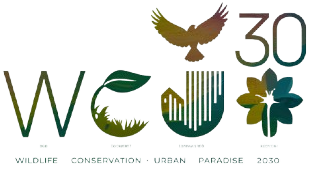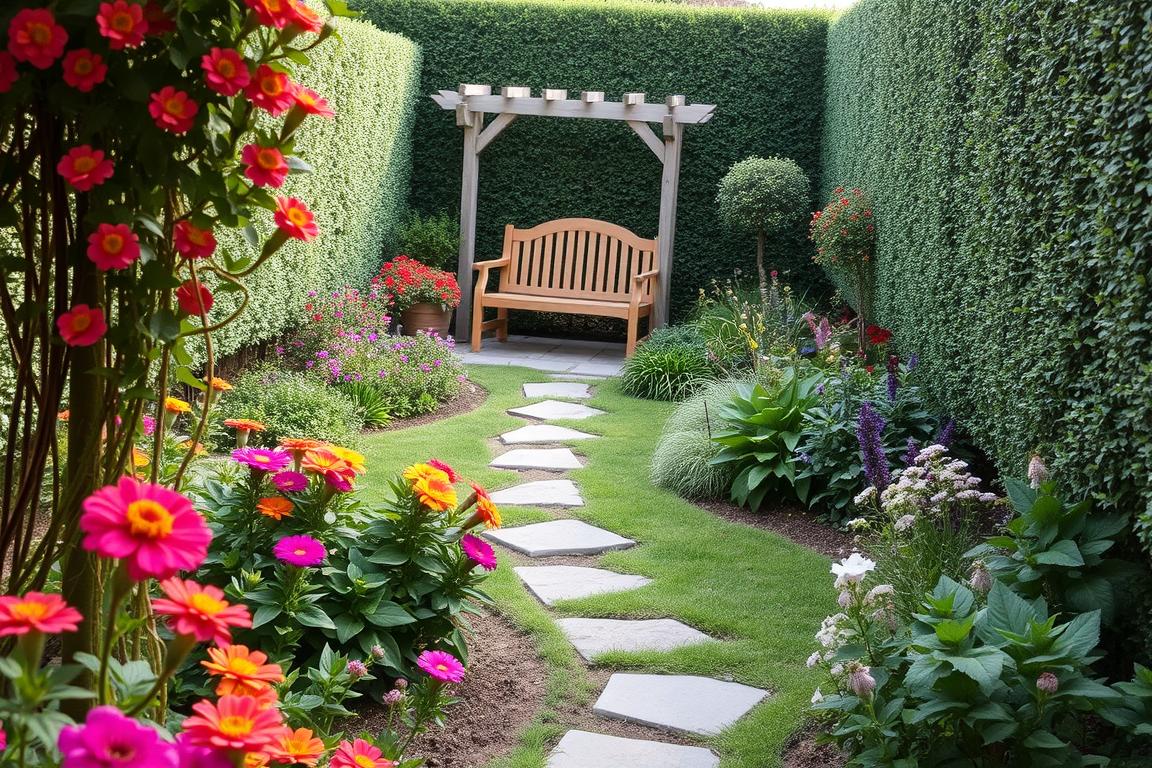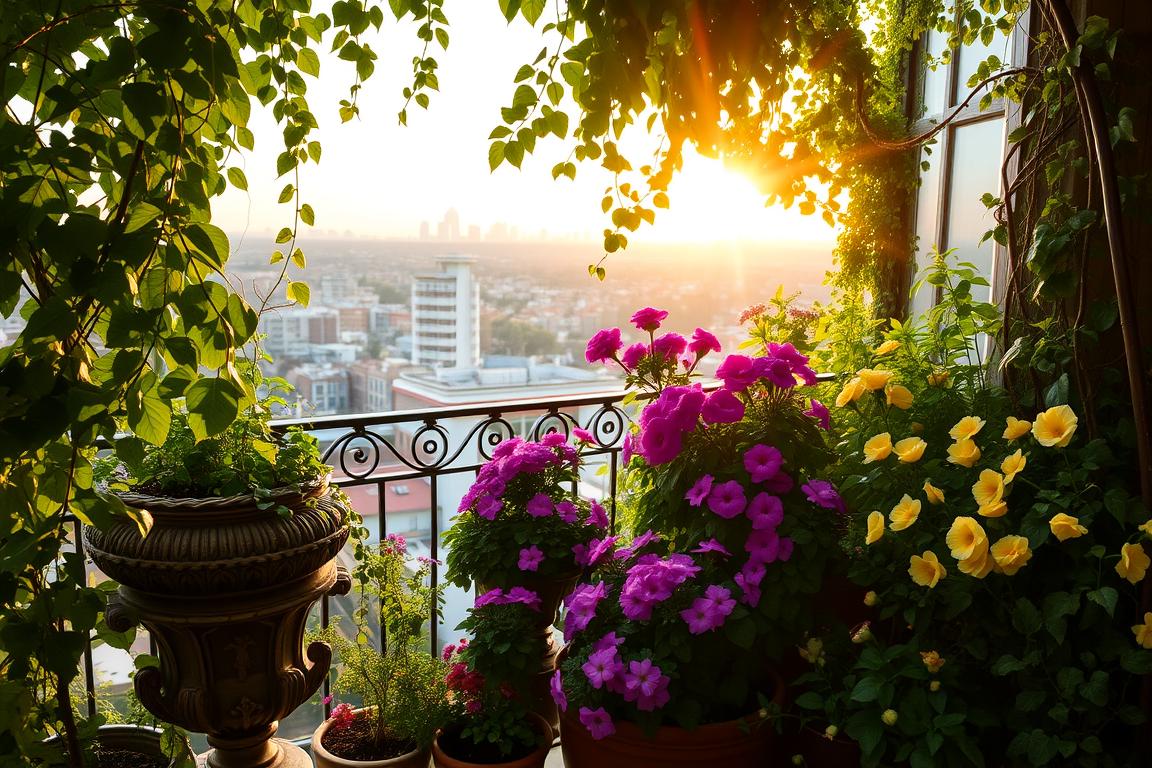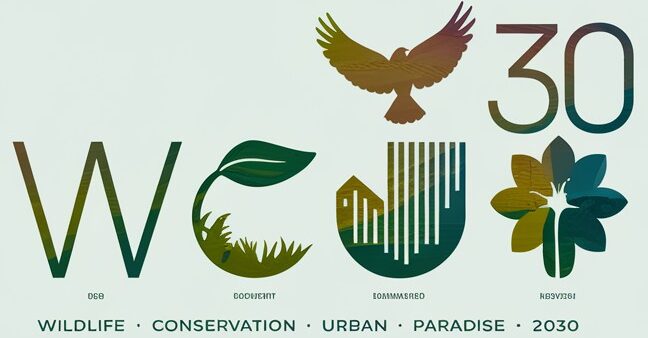Imagine your home coming to life. Windows that adjust to sunlight, walls that clean the air, and systems that save energy. This is Revolutionary Smart Living a future where nature and tech unite. It’s a world where every room adapts to your needs.
Think about your daily life. Does your home really support your well-being? What if it could lower stress, cut bills, and help the planet? All while feeling like a cozy sanctuary? Today, innovations mix advanced tech with nature’s wisdom. They change how we live, from materials that breathe to systems that learn our habits.
Table of Contents
ToggleKey Takeaways
- Revolutionary Smart Living merges technology with nature to create functional, eco-friendly homes.
- Natural Design Innovations prioritize health, like improving air quality and reducing energy use.
- These solutions adapt to your lifestyle, saving money and resources over time.
- Modern homes can be both high-tech and calming, mirroring natural environments.
- Discover actionable ways to apply these ideas to your living spaces today.
Introduction to Revolutionary Smart Living
Smart living combines technology with nature to make homes that fit your lifestyle. It focuses on both efficiency and well-being. Learn how Smart Living Technology Trends and Innovative Natural Home Solutions are changing homes today.
What is Smart Living?
Smart living is more than just apps and gadgets. It’s a complete approach that blends Smart Living Technology Trends with nature. Think of lights that change with the day or sensors that save water. It’s technology that makes your life better without being in the way.
The Importance of Natural Design
“Biophilic design can reduce stress by up to 60% in indoor spaces.” – Human Spaces Report 2019
Natural design is more than looks. Innovative Natural Home Solutions like living walls or wood floors connect you to nature. They improve your mood and work performance. This way, technology and nature work together perfectly.
- Biophilic elements lower cortisol levels
- Smart systems save energy without sacrificing comfort
- Materials like bamboo and recycled glass reduce environmental impact
Innovation
True innovation in Brilliant Smart Home Ideas goes beyond just new gadgets. It’s about solutions that fit into our daily lives and solve real problems. Ask yourself: does a product make our homes more sustainable, simplify our routines, or make our spaces more beautiful?
| Criteria | Why It Matters |
|---|---|
| Sustainability | Cuts energy waste and reduces environmental impact. |
| User-Friendliness | Easy to use without complicated setups or learning curves. |
| Aesthetic Integration | Designs that complement your home’s style, not disrupt it. |
| Long-Term Value | Investments that adapt to evolving needs and save costs over time. |
Future sections will dive into innovations that meet these standards. Imagine smart thermostats that learn your habits or lighting systems that adjust to natural daylight. These examples show how Brilliant Smart Home Ideas combine technology with thoughtful design. Stay tuned as we explore each innovation in detail.
1: Biophilic Design Elements
Imagine a home where sunlight plays on your walls, and fresh herbs fill the air. The sound of a smart irrigation system tells you your plants are doing well. This isn’t just a dream—it’s the essence of biophilic design.
In this design, nature and technology come together. They create spaces that are good for you and the planet.
Key Takeaways
- Biophilic design uses natural light, materials, and ventilation to connect you to nature.
- Smart tech like automated skylights and plant sensors enhance these elements without disrupting your lifestyle.
- Living walls and indoor gardens improve air quality and mental focus.
- Biophilic principles fit any budget, from potted plants to full eco-systems.
- These designs reduce stress and energy costs while aligning with Sustainable Living Concepts.
Your home can be a sanctuary with sunlight and smart skylights. Indoor vertical gardens can bring life to every corner. Imagine a room with natural air flow through vents that adjust with the weather.
Smart soil sensors can water your plants only when they need it. This mix of nature and tech is not just trendy—it’s backed by science. Studies show it can lower stress and improve focus by up to 15%.
Even small changes, like bamboo shelves instead of plastic, make a difference. Biophilic design isn’t about going all in. A small herb garden in a tiny apartment or a living wall in a family room can make a big impact.
Every choice you make brings you closer to a healthier, Sustainable Living Concepts-driven home.
Innovation
Modern Eco-Friendly Home Innovations are changing how we use natural elements with smart tech. Think about windows that change with the sun or soil sensors for your plants. These new ideas make biophilic design come alive and interact with us.
- Smart glass that darkens in bright light, reducing energy use without sacrificing views
- AI plant monitors like Parrot Pot Companion, which alert you to watering needs via app
- Biomimetic materials like Lotusan facade panels, which clean themselves using rainwater
| Technology | Description | Benefits |
|---|---|---|
| Photochromic Glass | Automatically adjusts tint based on sunlight | Cuts HVAC costs by 20-30% (per studies by Lawrence Berkeley Lab) |
| AI Plant Sensors | Uses machine learning to track plant health metrics | Reduces water waste by 40% while improving growth rates |
| Bio-inspired Materials | Replicates natural self-cleaning surfaces | Cuts maintenance needs by eliminating periodic facade cleaning |
These innovations are more than just trends—they’re real solutions. By using systems that work like nature, your home can stay in tune with the environment. And it will run more efficiently. Future advancements like self-healing concrete and paints that absorb carbon promise even more exciting possibilities.
2: Smart Home Ecosystems
Imagine coming home after a long day. The lights dim, the temperature adjusts, and your favorite music plays. It’s all done without you doing anything. This is what Smart Living Technology Trends are all about.
Smart Home Ecosystems combine devices like smart thermostats and security cameras. They work together through a central hub. This hub controls your lights, climate, and entertainment, fitting your schedule.
These systems learn your habits. For example, they lower the heat when you sleep. This saves energy and keeps you cozy.
Open-architecture platforms let you add devices as you go. This is different from gadgets that work alone. It’s like how plants and animals in nature work together. Homeowners have even automated window shades to control sunlight and save energy.
Key Takeaways
- Smart Home Ecosystems use hubs to connect devices into a unified system.
- Adaptive technology learns your preferences to optimize comfort and efficiency.
- Open platforms allow gradual upgrades without requiring full overhauls.
- These systems balance innovation with natural design principles.
- Case studies show how ecosystems reduce energy waste while enriching daily life.
Innovation
Modern Green Building Designs use the latest tech to blend homes with nature. They use smart ecosystems with distributed intelligence. This makes homes more adaptable.
Machine learning looks at your habits. It adjusts lighting, temperature, and energy use to fit your life.
- Distributed systems reduce single points of failure, ensuring resilience like natural ecosystems.
- Algorithms learn preferences, saving energy while making you more comfortable.
- Biomimetic design mimics nature’s efficiency, creating self-healing networks.
| Traditional Systems | Modern Green Building Designs |
|---|---|
| Centralized control | Decentralized, adaptive nodes |
| Manual adjustments | Automated via AI predictions |
| Data silos | Interconnected, secure data sharing |
“Nature’s principles guide the most efficient systems.” – LEED Certification Expert
Keep your privacy safe by choosing systems with end-to-end encryption. Begin with a smart thermostat and then add more. Look for platforms that fit well with Modern Green Building Designs principles.
3: Energy-Efficient Materials
Imagine walking into a home where the walls keep you warm in winter and cool in summer. You don’t need to turn up the heat or air conditioning. This isn’t magic—it’s the future of living sustainably.
Energy-efficient materials are changing how we build and live. They combine nature’s wisdom with the latest science. These innovations do more than save energy. They create spaces that feel alive and adjust to your needs.
Key Takeaways
- Phase-change materials store and release heat, reducing reliance on HVAC systems.
- Transparent wood composites let light in while maintaining indoor temperatures year-round.
- Aerogels offer ultra-lightweight insulation, slashing energy waste in older homes.
- Smart textiles in curtains or walls adjust insulation based on outdoor temperatures.
- These materials cut long-term costs while boosting home comfort and resale value.
Innovation
Today’s homes are more than just places to live—they’re smart systems. Innovative Natural Home Solutions use nanotechnology to change how we live. Imagine walls that keep dirt away or countertops that stop bacteria.
These self-cleaning, anti-microbial coatings use tiny particles. They make your home cleaner without using harsh chemicals.
- Biomaterials like MycoComposite’s fungi-based insulation are better at keeping warm. They also use old agricultural waste, helping the environment.
- Smart materials with sensors tell you when your home needs attention. They alert you to problems like too much moisture or structural stress.
Materials like Ecovative’s mushroom packaging are now used in building. They help save energy and trap carbon, helping the planet. When picking materials, choose brands that care about the environment.
Look for certifications like Cradle to Cradle. These ensure your home is built to last and is good for the planet. With these innovations, you can build homes that are safe for your family and the environment. This shows that Innovative Natural Home Solutions are here to stay.
4: Water-Saving Technologies
Ever stood in the shower, watching water flow away? Every drop counts. Today, we have new ways to save water, making every drop count.
Key Takeaways
- Greywater recycling systems reuse shower and sink water for gardens and toilets.
- Smart sensors detect leaks and track usage to cut waste instantly.
- Rainwater harvesting with filters provides clean water for indoor and outdoor use.
- Hydroponic setups grow food while recycling water efficiently.
- AI-driven sprinklers use weather data to save up to 50% of outdoor water.
Imagine your shower water cleaning your garden instead of going to waste. Greywater systems filter water for reuse, reducing waste. Smart monitors alert you to leaks, saving gallons of water each year.
Rainwater harvesting systems now include UV filters, making rainwater safe for many uses. Hydroponic setups grow veggies using 90% less water than soil-based plants. AI irrigation systems water lawns only when needed, saving up to 50% of water.
These innovations save water, protect ecosystems, and lower bills. Start with smart monitors, then explore greywater or rain barrels. Every choice, from a filtration tank to an AI sprinkler, makes your home sustainable.
Innovation
Water conservation meets Revolutionary Smart Living with groundbreaking changes in home water management. Now, imagine getting clean water from the air—
makes it possible, even in dry areas. New systems use UV light and nanotechnology to clean water safely, without harmful chemicals.
- Blockchain networks let neighborhoods share real-time usage data to prevent waste
- Microbes engineered by companies like Genomatica break down contaminants while recycling nutrients
- IoT sensors alert you instantly when fixtures leak or usage spikes
In California’s dry Central Valley, early users saved 40% with these systems. One homeowner said:
“Our system not only cut bills but turned greywater into garden fuel.”
These innovations are moving from science fiction to real-world applications. This year, 12 U.S. cities will test them. As Revolutionary Smart Living grows, AI will help predict and save water. Your next home upgrade might include smart valves that learn your habits, making sustainability easy and comfortable.
5: Passive Solar Design
Imagine walking into a room where sunlight streams through windows, warming the floor beneath your feet. This isn’t because of a thermostat, but because your home was designed to work with nature. That’s the magic of Modern Green Building Designs blending timeless principles with smart tech to create spaces that feel alive.
Passive solar design isn’t just about big windows. It’s about crafting spaces that use sunlight, wind, and materials to stay comfortable year-round. Think of it as your home’s own energy system, learning from the sun’s path and adapting without extra effort from you.
Key Takeaways
- Passive solar uses window placement and materials to reduce heating/cooling costs by up to 50%.
- Smart tech like automated shades and electrochromic glass optimizes natural light and heat without manual adjustments.
- Thermal mass materials, such as concrete or stone, store and release heat to stabilize indoor temperatures.
- Retrofitting with overhangs, insulated shutters, or reflective coatings can adapt older homes to passive solar principles.
- Modern Green Building Designs in climates like the Southwest US use angled roofs and south-facing glass to maximize winter sun.
Innovation
Natural Design Innovations are changing how solar power fits into homes. Think of windows that make electricity without blocking light or roof tiles that act as solar panels. These ideas mix function with style, making green tech both invisible and effective.
- Solar roof tiles: They look like regular tiles but collect energy.
- Transparent solar windows: They let light in while powering your home.
- AI-driven systems: They predict weather and adjust energy use for savings.
Thermal storage systems store heat in walls or floors using special materials. For example, the Bullitt Center in Seattle uses geothermal wells and passive solar designs to be net-zero. Sweden’s Drake House stores summer heat underground for winter.
| Technology | Description | Advantages |
|---|---|---|
| Phase-Change Materials | Embedded in walls to absorb/release heat | Stable indoor temps without extra energy |
| Geothermal Integration | Uses ground temperature stability for heating/cooling | Reduces reliance on traditional HVAC systems |
“Solar isn’t just panels anymore—it’s part of the building itself.” – Dr. Mariana Delgado, MIT Solar Research Lab
These innovations show that being green and stylish aren’t against each other. By using Natural Design Innovations, you can cut energy costs and make your home look better. Check out the Edge Building in Amsterdam, where AI makes energy use better in real time.
6: Smart Landscaping Solutions
Imagine your backyard as a key part of your green lifestyle. Picture a garden that waters itself, tracks rain, and grows food just right for your area. This is what Brilliant Smart Home Ideas offers, blending tech with nature for hardworking outdoor spaces.
Smart irrigation systems adjust watering based on soil and weather, saving water and work. Microclimate designs use plants and materials like permeable pavers to cool your home naturally. Even small areas can be productive with edible gardens managed by apps that track plant health and harvest times.
Automated composting bins turn food scraps into soil, and motion-activated bird feeders and native plants attract wildlife. These solutions fit any climate, budget, and space, making your yard a smart, self-sustaining system.
Key Takeaways
- Smart irrigation systems use soil sensors to cut water waste.
- Permeable paving manages stormwater while beautifying driveways.
- Edible gardens with tech guidance boost food production in any space.
- Automated composting turns kitchen scraps into garden fertilizer.
- Wildlife-friendly tech like motion sensors supports local ecosystems.
Innovation
Landscaping today combines Innovative Natural Home Solutions with technology. It turns backyards into smart, green spaces. These spaces adapt and grow well on their own, needing little care.
“The future of gardening is about systems that think for you.” — GreenTech Innovations, 2023
- Robotic gardeners that weed, water, and harvest using AI, reducing labor and waste.
- Vertical hydroponic towers with nutrient pumps and solar-powered irrigation.
- Smart beehives with sensors tracking colony health and local pollinator activity.
- Lighting systems using motion sensors and dimmers to cut energy use while boosting safety.
- AR apps like GreenVision let you test plant layouts and soil changes before building.
Materials like soil-repairing fungi and biochar blends boost eco health. Ground-source heat pumps hidden in garden paths save energy, while rainwater systems filter and store runoff automatically. These Innovative Natural Home Solutions make landscapes work smarter, not harder. They create spaces that support your home and the planet.
7: Air Quality Enhancement
Imagine walking into your home after a long day, ready to unwind. But, hidden pollutants like dust, chemicals, and excess moisture are there. Now, picture breathing air as fresh as a mountain breeze every day. Eco-Friendly Home Innovations is making this a reality.
Key Takeaways
- Eco-Friendly Home Innovations pair plants like snake plants with smart sensors to purify the air automatically.
- Building materials such as low-VOC paints and air-purifying wall panels actively remove harmful chemicals.
- Smart vents adjust airflow using real-time data on CO2 levels, humidity, and occupancy patterns.
- Machine learning predicts pollution spikes, letting systems act before air quality drops.
- Improved sleep, clearer thinking, and fewer allergies are proven benefits of these solutions.
Innovation
Smart Living Technology Trends are changing how homes meet your health needs. Imagine air cleaning systems that work better than ever. New tech like microalgae bioreactors clean the air more effectively than plants. They can be built into walls or windows, mixing nature with modern design.
- Advanced molecular filters target pollutants like volatile organic compounds (VOCs) with precision.
- Smart humidity-responsive materials automatically adjust to keep air balanced, preventing mold growth.
- Pathogen-detecting sensors alert you to airborne threats in real time, boosting safety.
Wearables now link with home systems to create personalized air zones. Your smartwatch could tell your HVAC to change settings based on your allergies or activity. AI models use data from pollen counts to local wildfires to predict and prevent indoor air problems.
“Our system cut indoor pollutants by 70%,” says one early adopter using microalgae panels and AI-driven ventilation. “My family’s asthma incidents dropped noticeably.”
| Technology | Key Feature | Impact |
|---|---|---|
| Microalgae Bioreactors | Natural CO2 conversion | 2x oxygen output vs plants |
| Pathogen Sensors | Real-time pathogen detection | 98% contamination alerts |
| AI Modeling | Predictive pollution tracking | Reduces emergency maintenance by 40% |
These innovations are not just future tech—they’re being tested today. Smart Living Technology Trends show that homes can improve health and stay connected to nature. What’s next? Systems that adjust air quality based on your breathing patterns or solar-powered bioreactors that clean the air and save energy.
Embracing Sustainable Living Concepts for a Greener Home
Biophilic design and energy-efficient systems are changing our homes. Smart homes and passive solar solutions use less energy. Water-saving tech and air quality systems also help protect our resources.
Sustainable furniture, made from reclaimed wood or recycled materials, adds style and responsibility. It’s all about making our homes better for the planet.
Choosing furniture that’s certified by programs like FSC or brands like IKEA’s sustainable lines is a smart choice. These options reduce waste and lower your environmental impact. Every choice you make helps create a healthier home and planet.
Adopting Sustainable Living Concepts is more than a trend; it’s a shift toward mindful living. By focusing on durability, renewable resources, and energy efficiency, you make your home better for you and the planet. Start by replacing one item at a time. Look for multi-use designs and brands that are transparent. These steps can make a big difference.
FAQ
What is Revolutionary Smart Living?
Revolutionary Smart Living combines smart tech with natural design. It makes homes sustainable and functional. This approach improves your life and is good for the planet.
How are Natural Design Innovations beneficial for homes?
Natural Design Innovations make homes healthier. They use natural light, organic materials, and plants. These elements can lower stress and boost well-being.
Can you give examples of Brilliant Smart Home Ideas?
Brilliant ideas include smart lighting that follows your schedule and thermostats that save energy. Biophilic design, like living walls, also improves air quality and looks great.
What are some popular Sustainable Living Concepts?
Popular ideas include using energy-efficient materials and saving water. They also focus on reducing waste. These efforts help your home have a smaller environmental impact.
How do Eco-Friendly Home Innovations work?
Eco-Friendly Innovations use renewable resources and tech. They aim to cut down energy use and waste. Examples include solar panels, efficient appliances, and smart irrigation systems.
What constitutes Modern Green Building Designs?
Modern Green Designs aim for sustainability and energy efficiency. They use eco-friendly materials and smart tech. This approach reduces environmental harm.
What are some examples of Innovative Natural Home Solutions?
Innovative solutions include advanced water recycling and air purification using plants. Smart landscaping also helps by promoting biodiversity and saving water.
What are the current Smart Living Technology Trends?
Trends include using IoT for home automation and AI for better energy use. There’s also a focus on sustainable materials that look good and are eco-friendly.














